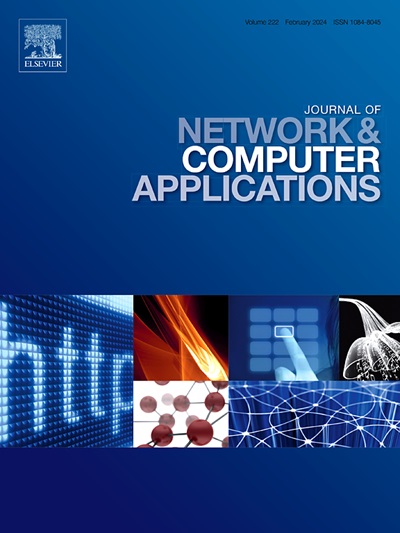DS-RAM: A dynamic sharding and reputation-based auditing mechanisms for blockchain consensus in IIoT
IF 8
2区 计算机科学
Q1 COMPUTER SCIENCE, HARDWARE & ARCHITECTURE
引用次数: 0
Abstract
Sharding is an effective strategy to improve the scalability of blockchain, especially in the context of massive data processing in Industrial Internet of Things (IIoT) scenarios. However, existing sharding schemes often overlook factors such as node reputation, resource capacity, and historical behavior, leading to imbalanced resource allocation, which in turn causes delays in real-time data processing and compromises system security. The blockchain consensus mechanism determines how nodes reach consensus, serving as the core of system efficiency and security. However, traditional consensus mechanisms lack effective detection of malicious nodes and insufficient supervision of consensus nodes, making the system vulnerable to attacks and malicious actions. To address these issues, this paper proposes DS-RAM (Dynamic Sharding and Reputation-based Auditing Mechanism), a dynamic sharding mechanism based on the weighted K-Medoids and Canopy algorithms. It comprehensively considers factors such as node geographical location, reputation, interaction frequency, and historical behavior to optimize node allocation, ensuring balanced distribution of sharding resources, thus improving system throughput and security. Additionally, DS-RAM introduces an auditing node module, which provides additional supervision of consensus nodes based on the reputation mechanism, enabling timely detection and isolation of potential malicious nodes, thereby effectively enhancing the fault tolerance of the consensus mechanism and system security. Simulation results demonstrate that, compared to traditional sharding schemes and reputation-based blockchains, the proposed method can effectively improve sharding security and blockchain sharding performance.
DS-RAM:用于工业物联网区块链共识的动态分片和基于声誉的审计机制
分片是提高区块链可扩展性的有效策略,特别是在工业物联网(IIoT)场景下的海量数据处理。然而,现有的分片方案往往忽略了节点信誉、资源容量和历史行为等因素,导致资源分配不均衡,从而导致实时数据处理延迟,影响系统安全性。区块链共识机制决定了节点如何达成共识,是系统效率和安全性的核心。然而,传统的共识机制缺乏对恶意节点的有效检测和对共识节点的监督,使得系统容易受到攻击和恶意行为的攻击。为了解决这些问题,本文提出了一种基于加权k - mediids和Canopy算法的动态分片机制DS-RAM (Dynamic Sharding and Reputation-based Auditing Mechanism)。它综合考虑节点的地理位置、声誉、交互频率、历史行为等因素,优化节点分配,保证分片资源的均衡分配,从而提高系统吞吐量和安全性。此外,DS-RAM还引入了审计节点模块,基于信誉机制对共识节点进行额外监督,及时发现和隔离潜在的恶意节点,从而有效增强共识机制的容错能力和系统安全性。仿真结果表明,与传统的分片方案和基于信誉的区块链相比,本文提出的方法能够有效提高分片安全性和区块链分片性能。
本文章由计算机程序翻译,如有差异,请以英文原文为准。
求助全文
约1分钟内获得全文
求助全文
来源期刊

Journal of Network and Computer Applications
工程技术-计算机:跨学科应用
CiteScore
21.50
自引率
3.40%
发文量
142
审稿时长
37 days
期刊介绍:
The Journal of Network and Computer Applications welcomes research contributions, surveys, and notes in all areas relating to computer networks and applications thereof. Sample topics include new design techniques, interesting or novel applications, components or standards; computer networks with tools such as WWW; emerging standards for internet protocols; Wireless networks; Mobile Computing; emerging computing models such as cloud computing, grid computing; applications of networked systems for remote collaboration and telemedicine, etc. The journal is abstracted and indexed in Scopus, Engineering Index, Web of Science, Science Citation Index Expanded and INSPEC.
 求助内容:
求助内容: 应助结果提醒方式:
应助结果提醒方式:


